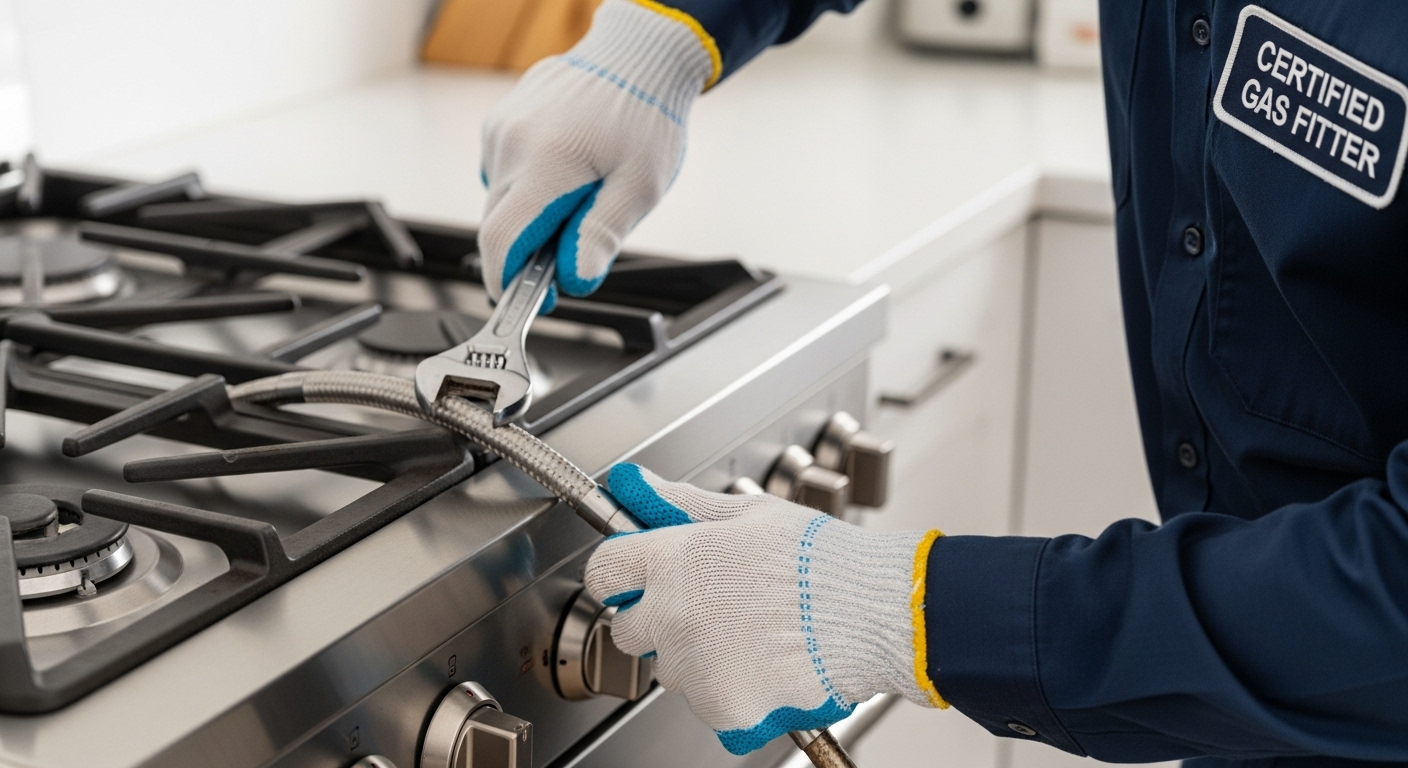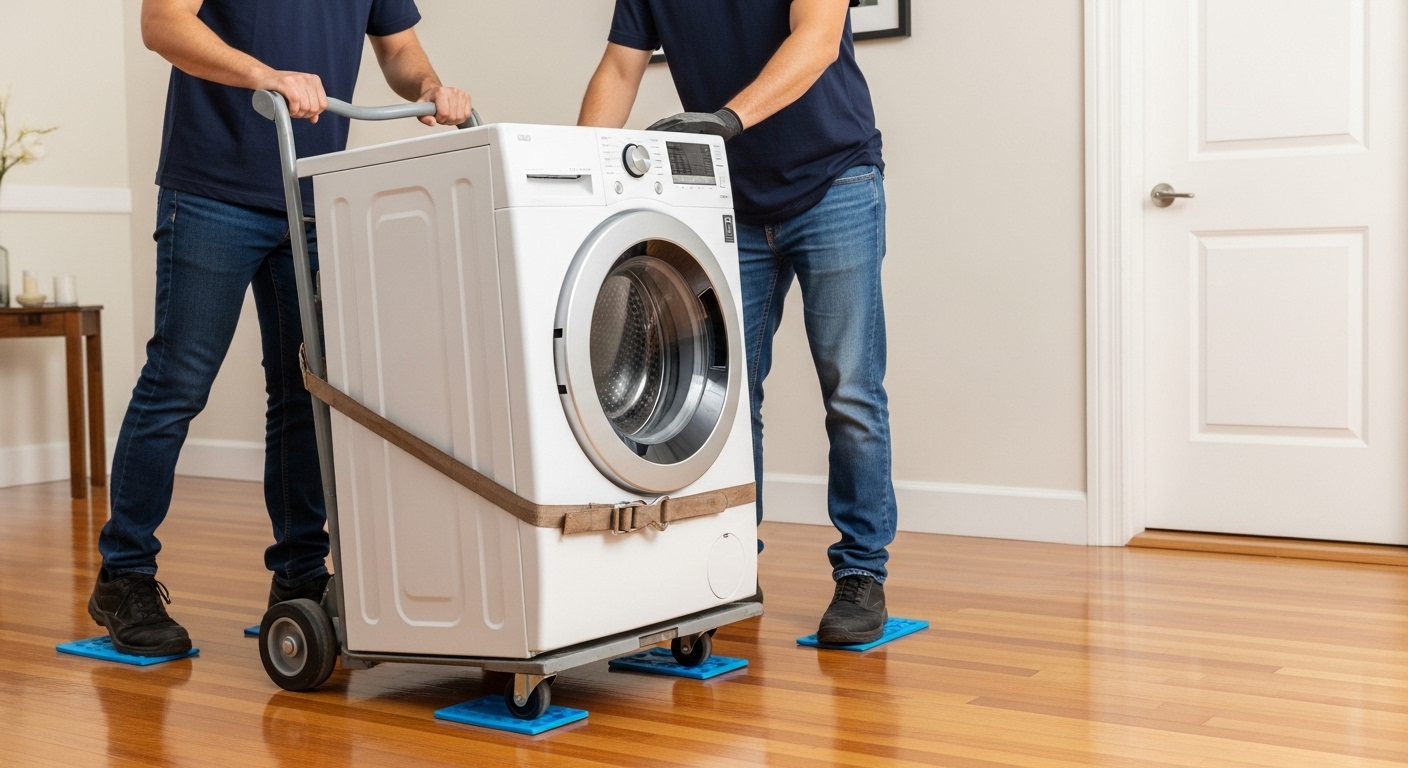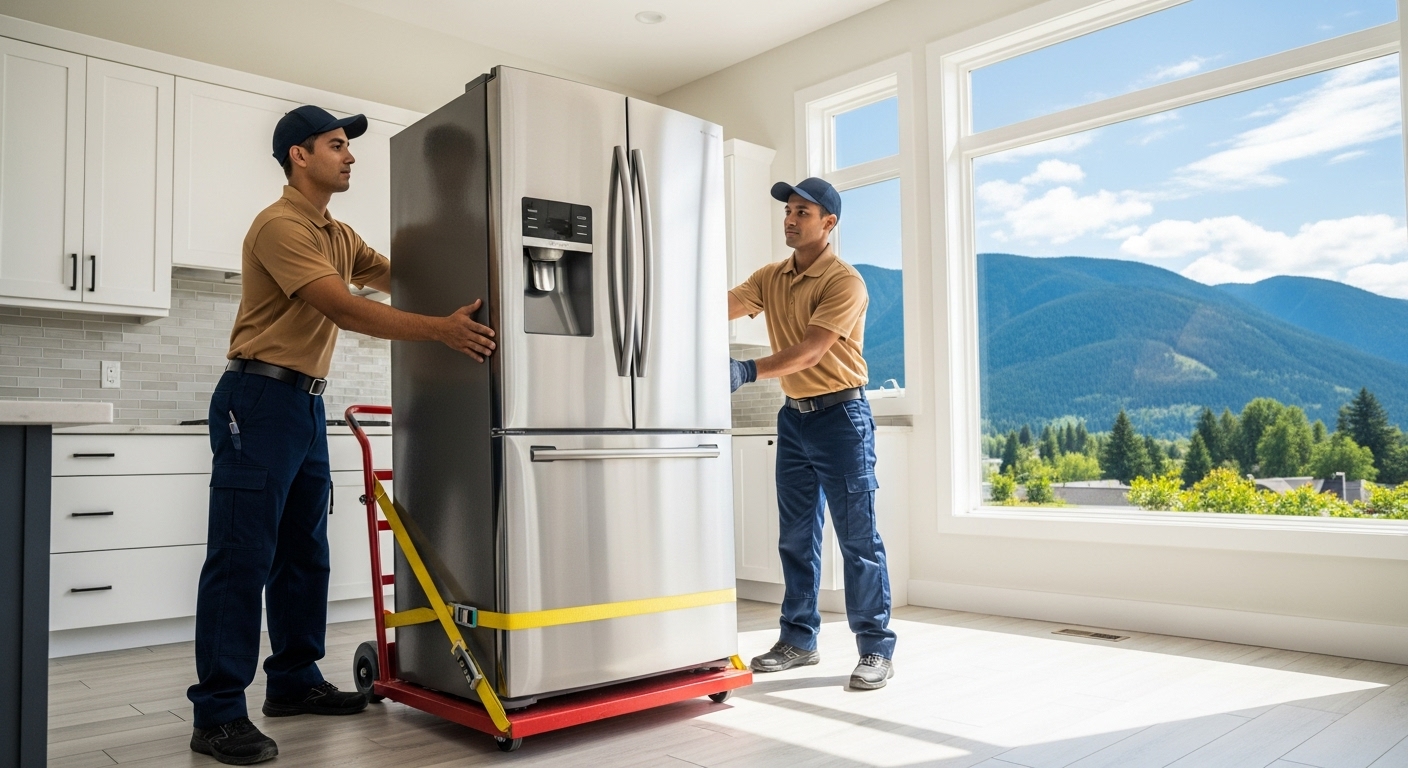The Ultimate Guide to Appliance Moving: Protecting Your Investment During Relocation in Chilliwack
Planning a move in Chilliwack and stressed about your expensive appliances making the journey safely? We’ve got your back with everything you need to know about protecting your investment, from prep work to professional services that’ll make your relocation smoother than your dishwasher’s rinse cycle.
Moving appliances isn’t just about muscle power and a good dolly – though those definitely help! As someone who’s watched way too many fridges meet their demise on moving day, I can tell you that the difference between a successful appliance move and a costly disaster often comes down to knowing the local regulations, using the right techniques, and understanding when to call in the pros. Whether you’re relocating your vintage KitchenAid mixer or that massive French-door refrigerator you splurged on last year, this guide will walk you through every step of the process.
From understanding BC’s strict gas safety regulations to mastering the art of securing transit bolts in your washer, we’ll cover all the insider tips that professional movers use to keep appliances intact during transport. Plus, we’ll dive into the unique challenges of moving in Chilliwack’s Fraser Valley climate and connect you with the best local services to make your relocation as stress-free as possible.
Key Outtakes:
- Professional disconnection is legally required for gas appliances in BC – DIY gas line work can result in penalties and safety hazards
- Refrigerators must remain upright during transport and sit for 4-6 hours after moving before plugging in to prevent compressor damage
- Full-value moving insurance costs approximately 1% of your shipment value but provides complete repair or replacement coverage for damaged appliances
- Transit bolts are essential for washers over 200 pounds – removing them prevents internal drum damage during transport
- Local Chilliwack services like JUSTJUNK offer eco-friendly disposal options for old appliances during your move

Understanding Local Regulations and Safe Disconnection

Before we dive into the nitty-gritty of moving techniques, let’s talk about something that could literally save your life – and definitely your wallet. British Columbia has some of the strictest appliance safety regulations in Canada, and Chilliwack is no exception. These aren’t just bureaucratic hoops to jump through; they’re serious safety measures that protect you, your family, and your new neighbors from potentially catastrophic accidents.
The biggest mistake I see people make when moving appliances is thinking they can handle gas disconnections themselves. Look, I get it – you’re already spending a fortune on the move, and paying for a gas technician feels like another unnecessary expense. But here’s the thing: BC gas safety regulations require licensed professionals to handle any gas line work, period. We’re talking about potential fines, insurance complications, and worst-case scenario, gas leaks that could endanger lives.
Gas appliances like stoves, dryers, and water heaters fall under the Gas Safety Regulation B.C. Reg. 103/2004, which mandates that only certified gas fitters can disconnect and reconnect a gas line. This isn’t a suggestion – it’s the law. The good news is that most reputable moving companies in Chilliwack work with certified technicians, so you don’t have to hunt down a gas fitter yourself. Companies like Paul’s Moving have established relationships with local gas technicians and can coordinate everything for you.
For water-connected appliances like washers and dishwashers, the rules are more flexible, but that doesn’t mean you should wing it. Professional disconnection prevents water damage to your floors and ensures proper drainage of internal water reservoirs. I learned this the hard way when helping a friend move – we thought we’d drained their washing machine completely, only to discover a puddle spreading across their hardwood floors when we tilted it onto the dolly. Precision Appliance Leasing recommends securing drain hoses inside the drum compartment and running a final drain cycle before disconnection to avoid these messy surprises.
Electrical disconnections are generally DIY-friendly, but here’s a pro tip: take photos of all wire connections before unplugging anything. Your future self will thank you when you’re staring at a tangle of wires behind your dryer, wondering which black wire goes where. Label everything, and when in doubt, call an electrician. The cost of professional help is always less than the cost of replacing a fried appliance.
Safety Protocols for Heavy Appliances

Now that we’ve covered the legal stuff, let’s get into the physical challenge of moving these beasts safely. Moving heavy appliances is like a chess game – every move needs to be calculated, and one wrong step can lead to disaster. I’ve seen grown adults throw out their backs trying to muscle a refrigerator up a flight of stairs, and I’ve watched expensive hardwood floors get gouged beyond repair by careless appliance dragging.
Floor protection should be your first priority, not an afterthought. Movers Not Shakers emphasizes that clean, dry floors combined with furniture sliders can prevent thousands of dollars in damage. I always recommend laying down old rugs or moving blankets as buffers, especially on delicate surfaces like marble or engineered hardwood. Those little plastic furniture sliders you can buy for a few bucks at any hardware store are absolute game-changers for moving appliances across smooth floors.
When it comes to refrigerators, the golden rule is simple: keep them upright whenever possible. GE Appliances specifically advises maintaining an upright position for built-in models to protect the cooling system. The compressor oils and refrigerants can get displaced if you lay a fridge on its side, potentially causing expensive damage that won’t show up until days after your move. If you absolutely must tilt it slightly to navigate a tight corner, keep the angle minimal and get it upright again as quickly as possible.
For washers and dryers, the story is different. These machines are designed to handle some tilting, but they have their own quirks. Washers over 200 pounds require specialized dollies and securing straps to prevent the drum from bouncing around during transport. 1-800-PACKRAT stresses the importance of using transit bolts – those special screws that lock the washing machine drum in place. If your machine didn’t come with them or you’ve lost them over the years, you can usually order replacements from the manufacturer.
Here’s something most people don’t think about: appliance doors. Refrigerator and dishwasher doors can swing open during transport, potentially damaging the appliance or whatever’s nearby. A simple bungee cord or moving strap wrapped around the appliance can prevent this, but make sure you’re not putting pressure on any delicate components. Some movers use painter’s tape, but I’ve found that it sometimes leaves residue on stainless steel finishes.
Weight distribution in your moving truck is crucial. Heaviest appliances should go in first and be positioned over the truck’s axles for the most stable ride. Secure everything with tie-down straps rated for the weight you’re carrying – don’t rely on those flimsy ratchet straps from the dollar store. Professional movers use heavy-duty straps with a working load limit of at least 1,000 pounds for major appliances.
Professional Appliance Movers in Chilliwack

While DIY moving can save money, there comes a point where professional help isn’t just convenient – it’s essential. After covering the technical and safety aspects, you’re probably wondering
 (604) 305-2992
(604) 305-2992 
 Schedule An Appointment
Schedule An Appointment 
